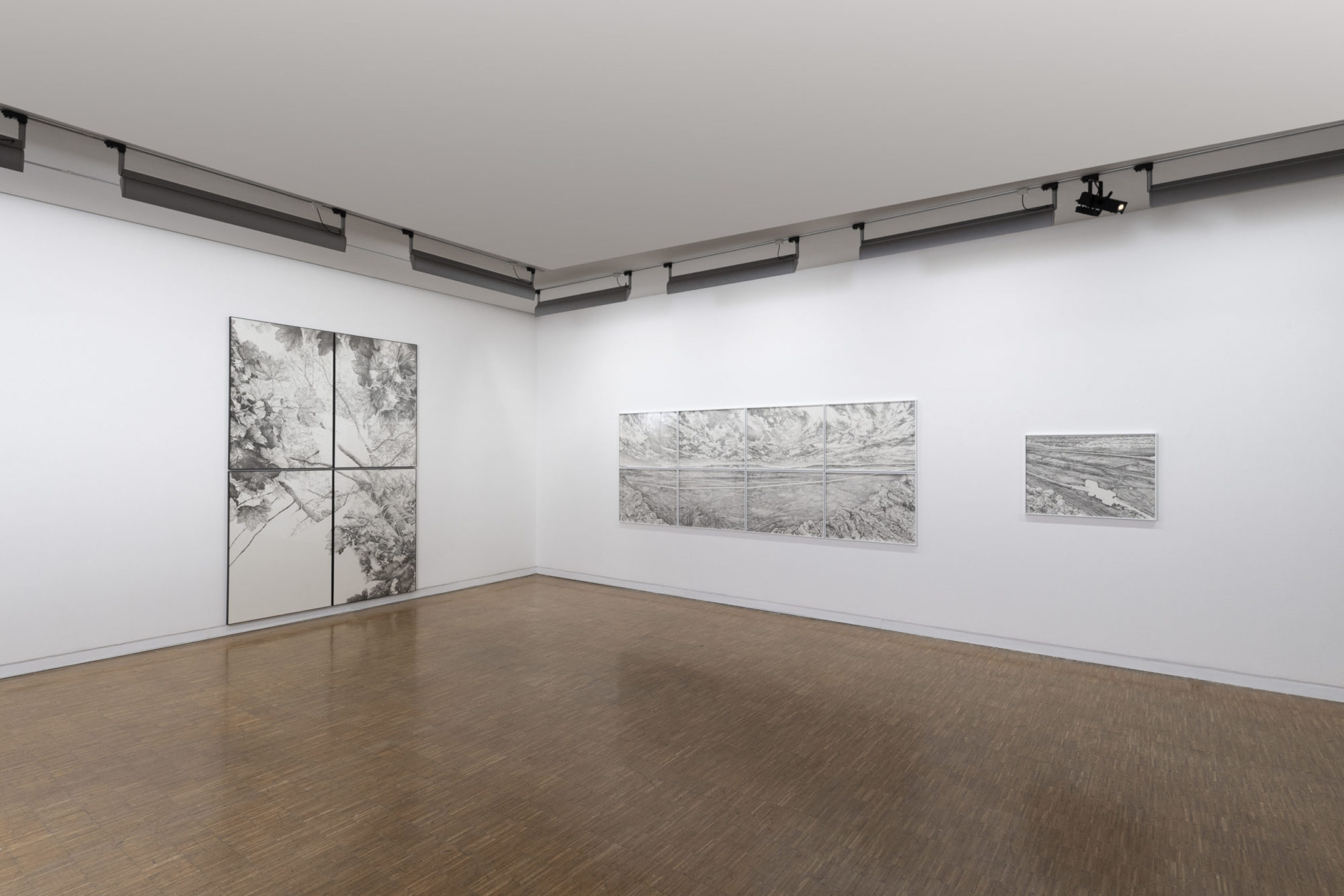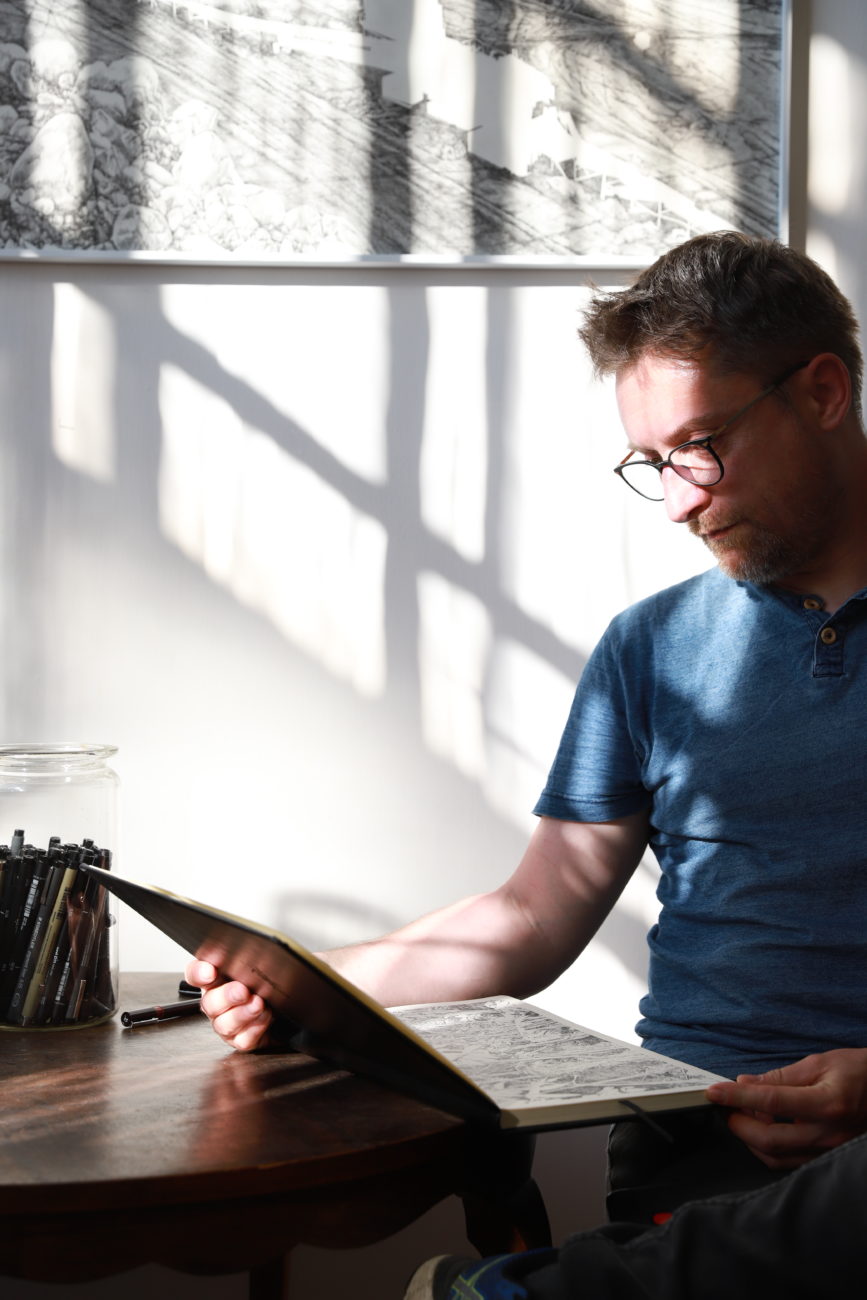Emmanuel Henninger is an artist based in the Mulhouse region and turned towards Germanic spaces. He is a graduate of the University of Strasbourg in Visual Arts and of the University of Haute-Alsace in Social and Solidarity Economy, and has developed a practice of drawing that is part of a deep and personal relationship with the spaces of nature that he regularly travels through and that he needs to live in, as a human being conscious of existing among the living, and that he represents in so doing, according to a double approach which oscillates from the romantic vision of the preserved landscape to the critical vision of the landscape practised or transformed by human activity.
Shaped by his relationship with others and his relationship with the physically tested environment, Emmanuel Henninger’s artistic and ecological subjectivity has, since 2017, led him to explore natural environments in order to visually retranscribe the perceptions of spaces encountered in the mountains or forests, particularly in the Alsatian Vosges Mountains or in the German forests, and to retain, through his studio drawing work, the “states of landscape”, through three aesthetic movements: through an immersive approach as close as possible to the density of the vegetation, through an interpretative and fictional approach to representations of landscape sites, and through a documentary and objective approach to landscapes deliberately modified by man and witnessed by the act of drawing.
The composite representations of landscapes that emerge from this dynamic of creation in an environmental context invite the viewer to maintain an aesthetic relationship with the natural spaces thus suggested and sometimes named. The drawings of rocks and meadows of the Alsatian Vosges or the images resulting from a vision infiltrated in the primary forests of Alsace and Germany, can thus be considered as “portraits of natural fragments”, inviting sometimes to embrace with empathy states of wild life, sometimes to reflect on the attachment that as contemporaries we can know towards states of landscape not or little anthropized, isolated like figures as much animated as they animate us. At the same time, these drawings, which are not exactly realistic landscape executions, contribute to the construction of an imaginary: sometimes autonomous, sometimes assembled according to a system of modular association, these representations remind us that the experience of nature is perpetually reformulated in the eye, in memory and in the repetition of the contact that is made with the forms of sensitive life.
More recently, Emmanuel Henninger’s interest in the problem of the subsistence of ancient ecosystems and their modification under the effect of natural resource exploitation activities has led to the emergence of a major work from his artistic body of work during his recent trip to Germany: The “Open-Pit Mine” drawing set opens a visual breach in the wounded and scarred landscape of the Hambach open-pit mine, which is being damaged by the exploitation of a lignite deposit on an industrial scale, responsible for the destruction of the forest of the same name and a major source of greenhouse gas emissions on a European scale. With this precise and incisive work, Emmanuel Henninger inaugurates a singular and committed artistic practice which participates in the ecosphic revolution of the languages of contemporary art and which, in doing so, deserves the attention of the regional and cross-border art scene.
Mickaël Roy, art critic, May 2020




